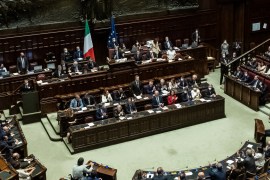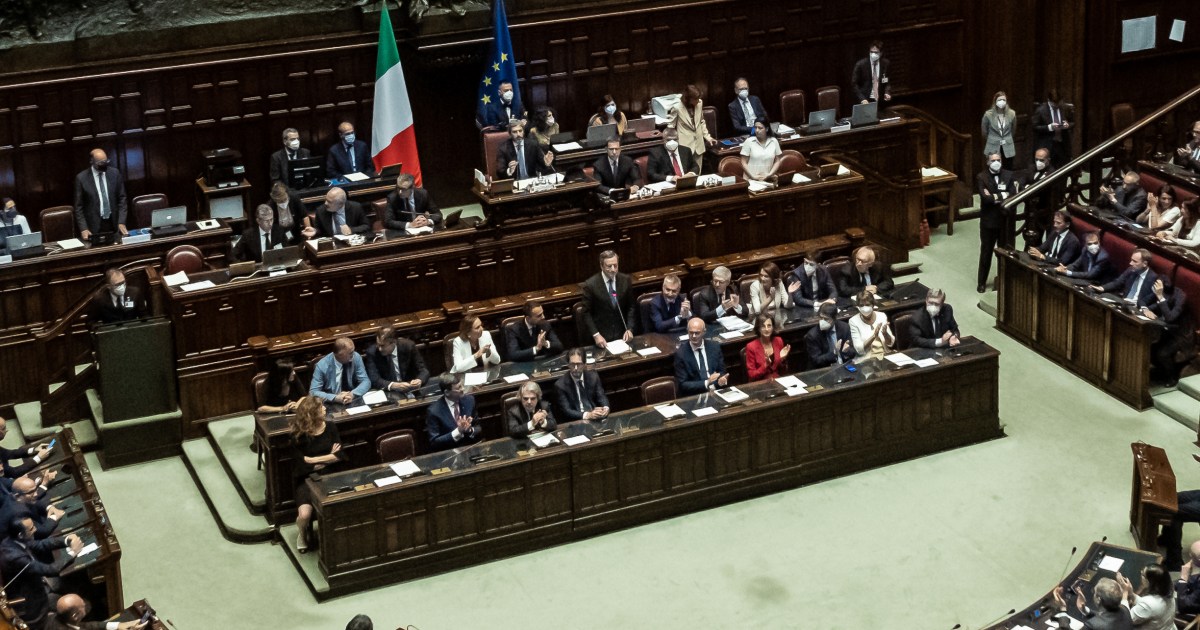
The fall of the Italian government led by Mario Draghi on July 20 caused a shock in the country for three main reasons. The first is that Draghi, who was president of the European Central Bank between 2011 and 2018, enjoys an unparalleled reputation in Italy as a competent and authoritative public servant, and Italian public opinion assigns him a far higher rating than any of the party leaders who are running for his job now. The second is that Draghi’s firm Euro-Atlantic leadership has made Italy a relevant player in the Russia-Ukraine crisis. The third reason is that precisely that combination of Euro-Atlantic reliability and personal authority has made Draghi the guarantor of the many benefits that Italy derives from its cooperation with the European Union. The Draghi government’s program coincided with the reforms of the National Recovery and Resilience Plan, allowing Italy to receive a total of around 200 billion euros (11% of its GDP) from the European Union by 2026. Thanks to these huge resources the country has a chance to overcome the 30-year stagnation of its economy, the consequences of the health crisis of 2020, and the geopolitical and economic traumas produced by the Russian invasion of Ukraine.
For all these reasons there was a reaction of bewilderment and even indignation in the country when the parties’ political gimmicks brought down Draghi’s broad unity government after 17 months. The political consequences are hard to fathom. Before Draghi’s resignation, polls showed that an early vote would favor the only opposition party, Brothers of Italy, a rising political formation on the far right of the parliamentary spectrum led by Giorgia Meloni. It is a party that is often identified with “post-fascist” nostalgia, combining evocative nationalist sentiments with an aspiration for social and ethnic uniformity, and which has strong affinity with the authoritarian model today represented in Europe by the Hungarian prime minister Viktor Orbán. Credited in the polls with the potential vote of almost one in four Italians, Brothers of Italy could lead a right-wing coalition to obtain a majority of seats in the Italian parliament.
Draghi’s fall may seem outlandish to foreign observers. But the intensification of political turmoil was inevitable as the end of the legislature approached. The 2018 elections gave rise to a populist legislature with the majority of seats assigned to two parties that shared similar demagogic rhetoric and ended up governing together for roughly one year: the Five Star Movement, conventionally placed on the left of the political spectrum, and the League on the right. After two governments led by Giuseppe Conte and characterized by an unusual level of incompetence, in February 2021 Mario Draghi received the mandate to lead a government of national unity. The only political formation that did not participate in the Draghi government was Meloni’s far-right Brothers of Italy.
In July 2022, the approaching end of the legislature in spring 2023 awakened the instincts of all Italian parties. Since the never-resolved crisis of political credibility that arose with the corruption scandals of the early 1990s, no government majority in Italy has ever been reconfirmed in the next election. Thus it has been consistently convenient for all political parties to present themselves to the voters from the opposition benches. In the last months of this legislature, the more populist government parties ran for the door.
The first move, the last serious mistake in an endless chain, was made by Five Star Movement leader Conte preannouncing his exit from the governing coalition. The right-wing parties immediately understood that Conte had broken the alliance with the other large party on the left, the Democratic Party, a strong supporter of Draghi. In the event of an election, therefore, the left camp would not have been able to form a coalition. Immediately, the right-wing parties that were participating in the government — Silvio Berlusconi’s Forza Italia and Matteo Salvini’s League — brought about the fall of the government and — together with Brothers of Italy — called for new elections. Draghi could not help but climb the Quirinale hill and give President Sergio Mattarella his resignation.
The coincidental action of Conte, Salvini, and Berlusconi raised the suspicion that the fall of Draghi was the work of the influence of Russian President Vladimir Putin, who saw Draghi as the leader of the larger European Union countries most strongly opposed to the Russian military and diplomatic strategies. There is abundant proof of Putin’s interest in Italy’s political development, but no evidence yet of Moscow’s direct influence on the three leaders who conspired against Draghi. However, Berlusconi and Salvini are at risk of being blackmailed by Putin, having cultivated business relations with Moscow, either personally or through members of their parties.
In this situation, President Mattarella’s reaction was perhaps the decisive factor in the whole story. Instead of carrying out arduous consultations to save the legislature, the president of the republic called new elections at the shortest possible notice, on September 25. In this way, Mattarella gave the parties just one month to present by August 21 their lists of candidates. It is an extremely short period to reduce the conflicts and infighting that characterize the potential coalitions of the right and of the left.
The schedule is even more demanding if one considers that the elections will be conducted under a new electoral law. This new law reduces the number of seats in the Chamber of Deputies from 630 to 400 and cuts the Senate from 315 to 200 seats. Furthermore, the new provisions make it more difficult to form tactical coalitions as in the past, built more to steal votes from opponents than to affirm unified programs and a single coalition leader.
Unity is problematic on the left. After the Five Star Movement broke with the Democratic Party, the latter must seek new alliances in the center rather than on the left. Much of the Democratic Party’s hopes rest on future cooperation with Carlo Calenda’s Azione, a new centrist political formation that has been on the rise and drains support from Berlusconi’s party.
However, the lacerations are perhaps just as deep on the right, where Meloni claims the right to be or choose the leader of a new government under a previous agreement with Forza Italia and the League that assigned the leadership of a right-wing coalition to the party with the most votes. Berlusconi is by no means of the same idea, and it cannot be excluded that he and Salvini join forces to have a different prime minister. Brothers of Italy, at that point, could stand alone at the polls rather than run with the others in a coalition. To avoid that eventuality, a preliminary agreement between Meloni, Berlusconi, and Salvini was reached on July 27. But the agreement does not seem watertight: Brothers of Italy’s current advantage is given by its role as the sole opposition party during the whole duration of the past legislature. It is unlikely that this advantage can last once Meloni becomes the government’s leader, and in a matter of months, Berlusconi and Salvini would be tempted to challenge Meloni.
Mattarella’s choice to start the election now forced the parties to expose their weaknesses in public. Under the new electoral law, a little more than a third of the seats in the Chamber of Deputies are elected under the first-past-the-post system rather than allocated with the proportional system. Depending on who wins about 30 more competitive seats, one coalition or the other should win an absolute majority. Confidential polls of mid-July assigned an 80% probability of a victory by the right-wing coalition. Meloni, Salvini, and Berlusconi are still the frontrunners, but today the vote looks more uncertain than it looked then.
And now for the dream. Should no absolute majority emerge from the vote, the parties would be unable to form their favored ruling coalitions in a fragmented parliament. In that case, Mattarella would have to search for another super-partes (impartial) leader to form a cross-party coalition or technical government, a tradition ingrained in Italian politics since the country’s unification in 1861. A solid number of Italians hope that, come October, Italy’s party leaders will be forced to knock on the door of Mario Draghi’s sheltered house in Umbria, resurrecting after 2,500 years the legend of Lucius Quinctius Cincinnatus, the Roman consul who in an emergency was asked to leave his retirement in the countryside and resume power.


